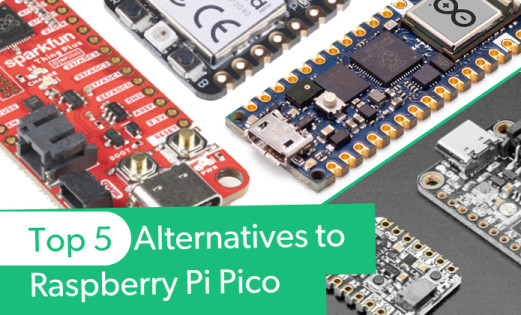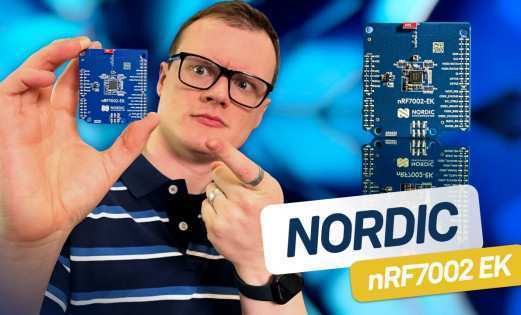Raspberry Pi 5: New Product Release Announcement!
We all thought that the Raspberry Pi 4 was going to be the last iteration of the Raspberry Pi, but today, the Raspberry Pi Foundation just announced the release of the Raspberry Pi 5. What challenges has the Raspberry Pi Foundation faced in the previous years, what features does the Raspberry Pi 5 have, and what could this mean for the future of custom silicon?
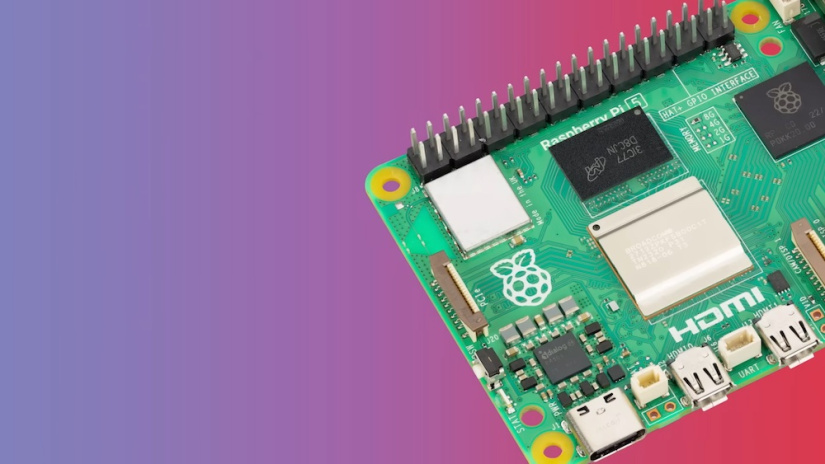
Raspberry Pi 5 is announced!
In what can only be described as a complete surprise, the Raspberry Pi Foundation has recently launched its latest Pi, called the Raspberry Pi 5. While some readers may be wondering why Raspberry Pi is launching a new machine despite having production issues with its older systems, the answer to this question lies in silicon that powers this new machine.
Raspberry Pi 5 Specifications Overview
At the core of the Pi 5 is a Broadcom BCM2712 integrating a quad-core 2.4GHz 64-bit ARM Cortex-A76, but the I/O controller used is an entirely Raspberry Pi developed chip, called the RP1. This chip is responsible for providing USB3.0, Ethernet, GPIO, MIPI display, and MIPI camera ports, and by using a piece of custom silicon, Raspberry Pi can eliminate some of its dependencies on chip manufacturers who have been struggling to supply parts.
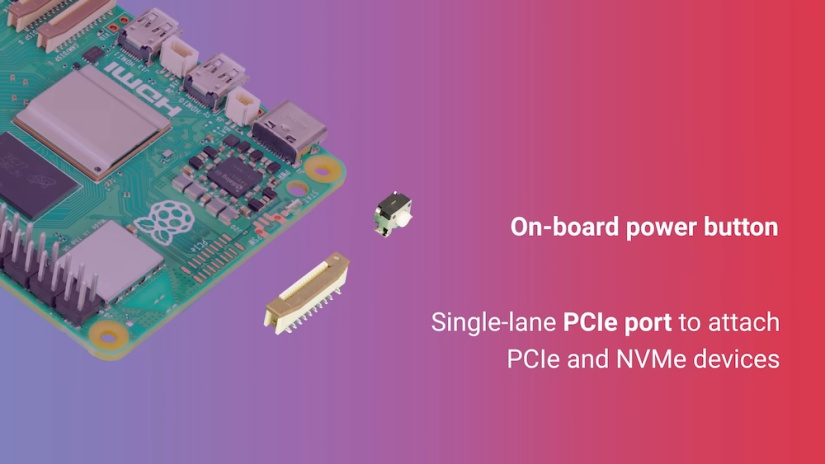
In addition to the custom silicon, the new Pi 5 also integrates a PCIe 2.0 x interface for connecting to high-speed peripherals, Bluetooth 5.0 Low Energy, Dual Band Wi-Fi, and Gigabit Ethernet, giving users the option to choose between a wired and wireless connection. PoE is also supported in the Pi 5 which allows users to power the board entirely over ethernet, and the use of a USB-C port allows for powering over USB.
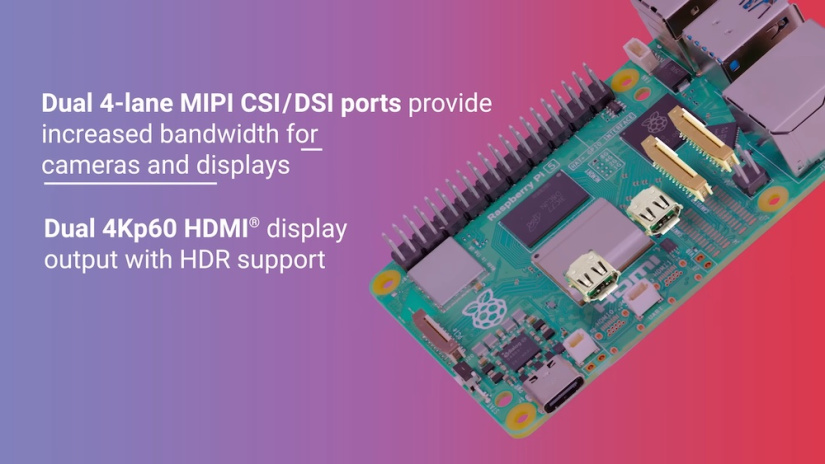
While a real-time clock is integrated into the board, the lack of an on-board battery means that the Pi will still need to use a networked time server to reset its clock during power losses. However, luckily for users, the RTC can be powered externally via a supercapacitor or small battery, allowing for the RTC to maintain its time, even if power is lost.

On the topic of power, the Pi 5 also integrates a DA9091 power management IC (provided by Renesas) which is capable of outputting as much as 20A of current to the Cortex core (and thus, enabling high-performance processing). The addition of this power module (along with the official 27W PSU from Raspberry Pi) will see power warnings in Raspbian a thing of the past.
Raspberry Pi 5 Specifications Breakdown
- Broadcom BCM2712 2.4GHz quad-core 64-bit Arm Cortex-A76 CPU, with cryptography extensions, 512KB per-core L2 caches and a 2MB shared L3 cache
- VideoCore VII GPU, supporting OpenGL ES 3.1, Vulkan 1.2
- Dual 4Kp60 HDMI® display output with HDR support
- 4Kp60 HEVC decoder
- LPDDR4X-4267 SDRAM (4GB and 8GB SKUs available at launch)
- Dual-band 802.11ac Wi-Fi®
- Bluetooth 5.0 / Bluetooth Low Energy (BLE)
- microSD card slot, with support for high-speed SDR104 mode
- 2 × USB 3.0 ports, supporting simultaneous 5Gbps operation
- 2 × USB 2.0 ports
- Gigabit Ethernet, with PoE+ support (requires separate PoE+ HAT)
- 2 × 4-lane MIPI camera/display transceivers
- PCIe 2.0 x1 interface for fast peripherals (requires separate M.2 HAT or other adapter)
- 5V/5A DC power via USB-C, with Power Delivery support
- Raspberry Pi standard 40-pin header
- Real-time clock (RTC), powered from external battery
- Power button
What does this mean for the future of custom silicon?
If the release of the Pi 5 teaches us anything, it’s that custom silicon is the way forward. While off-the-shelf solutions are great for keeping prices low and simplifying the design stage, the reliance on multiple manufacturers can introduce a multitude of unforeseen challenges. Of course, it’s not just supply shortages that can be a challenge, in some cases, manufacturers can just outright decide to stop making a part.
![]()
Just like how the RP2040 has allowed the Pi Foundation to create its own microcontroller and control its production, the inclusion of the RP1 custom I/O chip not only allows the Pi 5 to introduce stability in its manufacturing process but also maximize the performance of every watt of power consumed (as only the most important circuits are integrated into the chip).
To see another excellent example of how custom silicon can see a massive boost in performance, one only has to look at the Apple range of products that have switched over to the M1, M2, and soon, the M3 custom SoCs. These devices not only provide Apple with the ability to create architectures that are highly optimized, but ensure that they can manufacture their devices, even during the most difficult of times.
As the Pi Foundation continues to develop its range of SBCs, I hope to see a combination of the Pi and the RP2040. Such a combination would allow for fast GPIO access and complex hardware setups while providing the power of a desktop processor. But, if given the right push, maybe the Pi Foundation will one day develop its own SoC, and use only Pi silicon!
Did you enjoy this article?
Make sure you subscribe to The Electromaker Show for similar content and subscribe to our monthly newsletter!







































